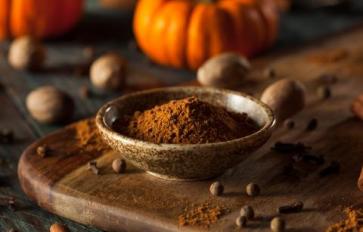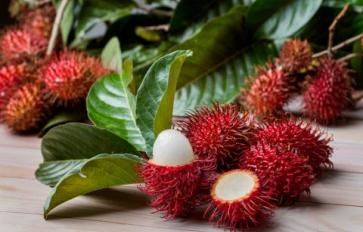
It all started 40 years ago, when our food supplies lost a valuable friend replaced by a sinister antagonist. Since then, we have been struggling to get enough of it, and sadly most of us didn’t even notice it was gone. We knew something was missing because things started going downhill from there, especially for women. You noticed yourself and loved ones with some added girth. That fatigue that just won’t go away, and you can’t understand or possibly remember why.
Your hormones are all over the place, and your brain’s not quite firing the way you know it should. It feels almost as if your body is experiencing some kind of apocalypse, but you can’t say it to anyone because, well, that’s just insane, right (?)
Maybe. But then again, that might be the lack of iodine talking. You see, 40 years ago the food industry decided to remove the iodine in our baked products and replace it with bromine. Bromine, according to dictionary.com, is “the chemical element of atomic number 35, a dark red fuming toxic liquid with a choking, irritating smell. It is a member of the halogen group and occurs chiefly as salts in seawater and brines.” It readily bonds with other atoms, making them highly reactive. You do not find it in nature; instead it is found as unreactive bromide salts. Bromine is extracted at an industrial level from salt lakes, the Dead Sea being the largest source in the world.
It is corrosive, hazardous to your health and can cause painful sores if it touches your skin. It is the bad boy of the halogen group and a direct antagonist to iodine. It competes with the thyroid gland to capture as much iodine as it can get.
Bromine is frequently used:
- In flame-retardants
- As the gas to fumigate termites
- The plastic in cell phones, computers and T.V. screens
- To purify swimming pools
- In the production of anti-knocking gas
- As a pesticide used on strawberries in the form of Methyl Bromide, predominantly in Californian grown strawberries
- As Brominated Vegetable Oil (BVO) used in citrus drinks, Mountain Dew, Gatorade, Sun Drop and other soft drinks to emulsify the liquid, allowing the color and flavor to be incorporated and not separate as color and flavor at the bottom and clear liquid at the top (recently taken out of Gatorade, Pepsi, Coke and Fanta)
- In medications- because of its ability to decrease the sensitivity of the Central Nervous System it is widely used in sedatives, anti-epileptics and tranquilizers. It is also used in medicines to treat heart problems, thyroid-hyperactivity and hysteria. It is even used to treat colic in babies, as cough medicines and in expectorants
- As Polybromo Diphenyl Ethers (PBDE) found in car upholstery, fabrics, carpets, pillow stuffing
- and mattresses
- As Bromobutyl rubber derived from combining butyl rubber with bromine. This is used extensively in the car industry for tires, conveyer belts, and windshield wipers. It is highly valued because of its physical “strength, low permeability, and is highly shock, weather and age resistant”
- In the form of Potassium Bromate in baked products as a dough conditioner to improve the product in some way
Quite an interesting ingredient to add to your Sunday muffin, don’t you think? Perhaps it accounts for that extra gooey goodness, who knows.
Besides being a tasty pesticide, it disrupts our thyroids, damages DNA, obliterates your libido, causes hearing loss, slows neural and cognitive development, and possibly contributes to mental illness, to name a few.
We are indeed surrounded by this toxic element.
Why Do We Need Iodine Anyway?
It’s simple, because almost every cell in our bodies needs iodine to function.
- Helps the sex organs (breast, ovaries, prostate), salivary glands, stomach, brain, thymus, pancreas, skin and cerebral spinal fluids to function properly
- Helps to remove the toxins from our bodies
- Has antiviral, antifungal, antibacterial, antibiotic and anticancer properties
- Helps us to detox from halogens (Bromine, fluorine, chlorine), lead, cadmium, arsenic, aluminum and mercury
- Supports a healthy pregnancy
- Supports healthy hair, skin and nails
- Needed for energy
- Helps you to achieve and maintain your ideal weight
- Helps to make you smarter by facilitating good brain function
- Gives your children a higher IQ, especially if you are getting adequate amounts during pregnancy
- Helps to regulate body temperature, keeping you warm in the winter and cool in the summer
- Iodine is required for the production of hormones, especially Triiodothyronine (T3) Thyroxine (T4): these are the primary hormones converted from iodine in the thyroid
- T3 and T4 control the basal metabolic rate
-
When both these hormones are at their optimal level:
- Body temperature rises
- You have a stronger heart beat and faster pulse
- The energy stored in the liver and muscles are broken down, which burns up food more quickly for fuel
- Growth and healthy brain development is promoted (in children)
- It activates the nervous system, leading to increased attention and quicker reflexes
-
How Do We Start Getting Enough Iodine?
Iodine is a trace mineral; it is therefore not available in the body and your body cannot produce it by itself. Iodine needs to be taken in food or as a supplement.

The current Recommended Daily Value (RDA) of iodine is 150 mcg, however according to Derry1, this amount is sufficient to prevent Goiter but not to prevent cancer. It makes sense, because the main iodine concern for the past few decades was the high levels of Goiter affecting the world’s population.
The recommended dosage of 150 mcg is not enough to provide the other cells in the body with the hormones it needs. The thyroid ends up consuming it all. (Derry, 2001:84)
The Japanese have the highest iodine intake in the world and incidentally, much lower rates of cancer (except stomach cancer, linked to the high amounts of nitrates in their food preservatives), goiter and iodine related diseases. They consume 20 times the RDA value of 150 mcg, taking in 1000-3000 mcg or 1-2 mg daily from food sources (mainly seaweed).
It is a topic of much debate as taking too much iodine and getting too little iodine both cause adverse reactions. Iodine needs to be taken in the optimal amount for best results.
Studies indicate that consuming 1000 mcg/1 mg of iodine daily correlates with the lowest adverse symptoms and the highest level of health.
If you are going to take an iodine supplement, check your levels first and ask your healthcare professional how much is best for you.
Different Doses for Different Folks
- According to the RDA, pregnant women need around 46% more iodine than women who are not pregnant
- Lactating women need 93% more
- Babies birth to 6 months need about 110 mcg, only 26% less than adults
- Children 1-8 years need 90 mcg, or 40% less than adults
- Preteens 9-13 years need about 120 mcg, or 20% less than adults
Note: Based on the RDA of 150mcg daily
Precautions and interactions for supplements:
- Iodine supplements interact with anti-thyroid medications such methimazole (Tapazole®). Taking them together could lead to the body under-producing thyroid hormones
- Taking potassium iodide supplements with ACE inhibitors such as benazepril (Lotensin®), lisinopril (Prinivil® and Zestril®), and fosinopril (Monopril®), could raise your potassium levels to a dangerous amount
- Your potassium levels could also become too high if you take potassium iodide with potassium-sparing diuretics such as spironolactone (Aldactone®) and amiloride (Midamor®)
Where Do I Get More Iodine?
This list includes vegan and non-vegan sources of iodine and is based off the 150 mcg RDA. It is listed from highest to lowest iodine content.

As we can see iodine is widely available in the form of food. Yet we still have iodine deficiency extensively affecting the world’s population.
Why is that the case?
Things That Can Affect Iodine Absorption
There are certain factors that can affect how the body absorbs iodine. Certain foods negatively impact how the body uses iodine and various vitamins and foods enhance the way the body uses the mineral.
Let us explore these factors:
- Foods containing goitrogens affect iodine uptake in the body (Bamboo shoots, broccoli, cabbage, cassava root, kale, lima beans, corn, millet, mustard, peanuts, pine nuts, sweet potato)
- These goitrogens are deactivated by the process of cooking
- Drinking large amounts of tea negatively impacts iodine uptake
- Drinking filtered, distilled or spring water helps with the absorption of iodine. Try not to drink tap water as the fluorine and chlorine content disrupts iodine absorption
- Avoid unfermented soy products, gluten and sugar – especially the refined white sugar
- Limit the use of air conditioning and use the windows in the car more
- If your levels of vitamin C and magnesium are low, try raising it before increasing your iodine intake
- Increase your selenium intake by eating more brazil nuts, wheat germ, mushrooms, garlic, onions, sunflower and sesame seeds
Eating more iodine rich foods on a daily basis is a good way to boost your health goals and eliminate some of the food related illnesses we are facing today. However it is even more important to significantly reduce your exposure to iodine’s antagonist to be able to reap the rewards.
Knowledge is halfway to solving. Now that you are more aware about how your body works and how to work with it, you are better able to prevent and treat illnesses with nutrition.
“To keep the body in good health is a duty, for otherwise we shall not be able to trim the lamp of wisdom, and keep our mind strong and clear. Water surrounds the lotus flower, but does not wet its petals.” Buddha
Resources:
- Breast Cancer and Iodine, Dr. David M. Derry, MD, PhD (2001) Victoria, BC: Trafford Publishing
- https://thyroidresearchjournal.biomedcentral.com/articles/10.1186/1756-6614-4-14
- https://ods.od.nih.gov/factsheets/Iodine-Consumer/
- http://www.ncbi.nlm.nih.gov/pubmedhealth/PMH0072572/
- http://orthomolecular.org/library/jom/1980/pdf/1980-v09n02-p105.pdf
- http://www.livescience.com/32072-bromine.html
- https://healthunlocked.com/advanced-prostate-cancer/posts/134028979/foods-supplements-vitamins-iodine-other-halides
- http://foodhealth.info/iodine/
- http://emedicine.medscape.com/article/122714-overview
10. http://bsef.com/about-bromine/
11. http://www.bbc.com/news/magazine-29376436








